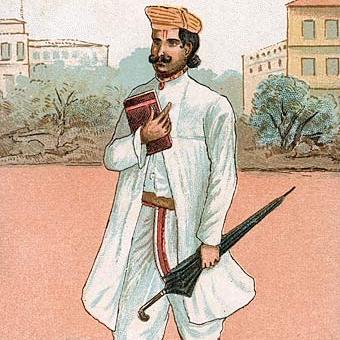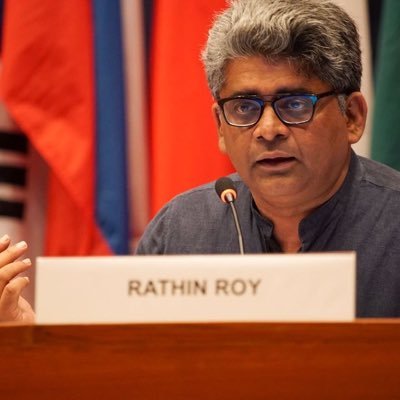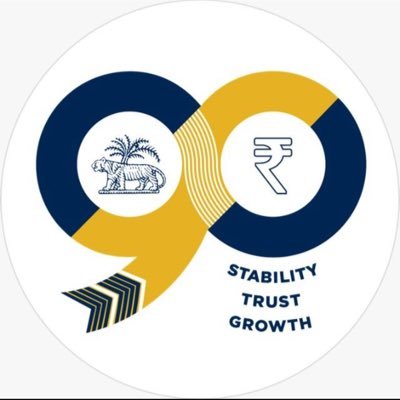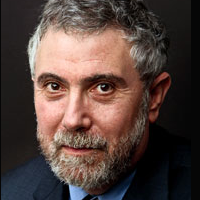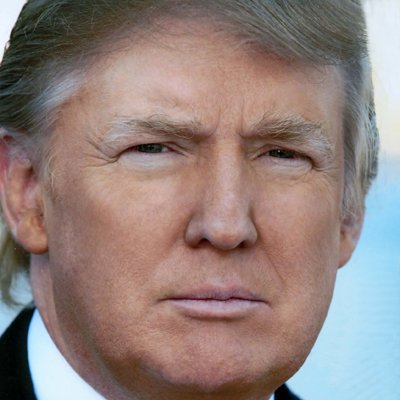Part-1 of a 4-part series on India household finances in HBL. Key highlights: 1) For the first time since 1950s, income growth lagged consumption and the gap widened further in the post-pandemic years, 2) Better consumption growth as supported by lower saving and higher debt.

Happy to share my article published in today's Financial Express. Feedback appreciated. I look at the corporate capex growth in the pre- and post-election periods since 2004 and there is no evidence of it picking up after elections. @EmergingRoy @VetriSmv

There is no better appreciation than when your inspiration appreciates your work. I am very excited to see @michaelxpettis endorsing my Book "The Eight Per Cent Solution" on this platform. Hope to create more noise regarding the approach used in the Book. Did you get your copy?

I will remain extremely grateful to @martinwolf_ for including my Book "The Eight Per Cent Solution" in Financial Times' Best Book of 2023 - Economics. I hope the framework used in the Book, i.e. sectoral financial position, gains traction and more analysis is seen in mainstream.

lifestyle.livemint.com/news/big-story… Great to see my Book "The Eight Per Cent Solution" featured in the Best Business Books of 2023 by Mint in today's newspaper I would request you to read it for yourself. I hope you find it useful. Don't forget to share your feedback for my benefit 😊
Happy to share my co-authored article in today's Hindu Business line with Dr Rathin Roy. We argue why it may be difficult for the government to continue to support the economic growth in the near future in the same way as it has done in the recent past. @EmergingRoy @the_hindu

With Quarterly GDP growth at 7.6% why read a book that talks of a solution for 8%? Because it provides a context for our aspirations; the trade offs & policy choices needed to sustain the 8%. An outstanding book by @NikhilG82218767 , whose research had always been insightful

Happy to share my article in today's Mint on upcoming RBI policy. In a nutshell, we expect the MPC to remain hawkish. Further, we do not even recommend a change in stance, because moving to ‘neutral’ from ‘withdrawal of accommodation’.

What else could be more exciting for me than to meet Dr C Rangarajan, former RBI Governor and share a copy of the Book with him? Thank you Sir. Your guidance and endorsement has been instrumental in making my dream come true. @kaul_vivek @EmergingRoy @CafeEconomics

Are the recent RBI announcements to restrict unsecured consumer loans enough or shall we expect more of these in the future? That’s what we answer with data and facts. Overall, we believe that this is just a beginning and more of these would come to contain unsecured retail loans



"...Nikhil Gupta has written a highly insightful book, impressive for how its analysis connects the dots between different parts of the economy... ...Highly recommended for all wanting to understand the Indian economy..." First advance praise for my Book from Dr Viral Acharya
Happy to be back and I promise to be more regular and interactive this time. I am elated to share the publication of my Book titled "The Eight Per Cent Solution" by Bloomsbury. The foreword is written by #rathinroy. So read it and share your feedback

India's fiscal deficit is proposed to ease from 6.8% in FY22 to 4.5% of GDP in FY26. Assuming average nominal GDP growth of 10% and tax buoyancy of 1.2x, such fiscal consolidation means average growth of just 6.2% in total spending during the period vs. 8.6% in pre-COVID years.

Despite 7% growth each in first 2 decades of 21st Century in India, there were massive differences. In order to achieve 8-10%, there are five areas of continuous improvement: Financial sector, residential construction, external sector, structural reforms & Manufacturing sector.

Our estimates suggest India's non-financial sector debt grew 10.5% YoY in 2QFY21, highest in 5 quarters. Almost the entire debt growth was on account of higher government debt, as non-government debt growth was just ~5%. There is no quarterly official data available on the same.

Self-employed workers would be one of the worst affected categories due to COVID-19 and regular workers would be relatively least affected. The share of the former is highest and the latter is lowest in India, making it particularly difficult for the third largest Asian economy.

United States Trends
- 1. Bengals 80,4 B posts
- 2. Chargers 69,9 B posts
- 3. McPherson 12,3 B posts
- 4. Herbert 35,6 B posts
- 5. Joe Burrow 21,9 B posts
- 6. #BaddiesMidwest 21,7 B posts
- 7. #BoltUp 5.644 posts
- 8. Zac Taylor 4.419 posts
- 9. #ช็อตฟีลMV 135 B posts
- 10. MILKLOVE SHOT FEEL 218 B posts
- 11. #CINvsLAC 10,5 B posts
- 12. Money Mac N/A
- 13. WWIII 179 B posts
- 14. JK Dobbins 4.680 posts
- 15. #SNFonNBC N/A
- 16. 60 Minutes 32,8 B posts
- 17. Harbaugh 16,3 B posts
- 18. Ladd 5.862 posts
- 19. Scotty 10,3 B posts
- 20. Tee Higgins 3.919 posts
Something went wrong.
Something went wrong.




